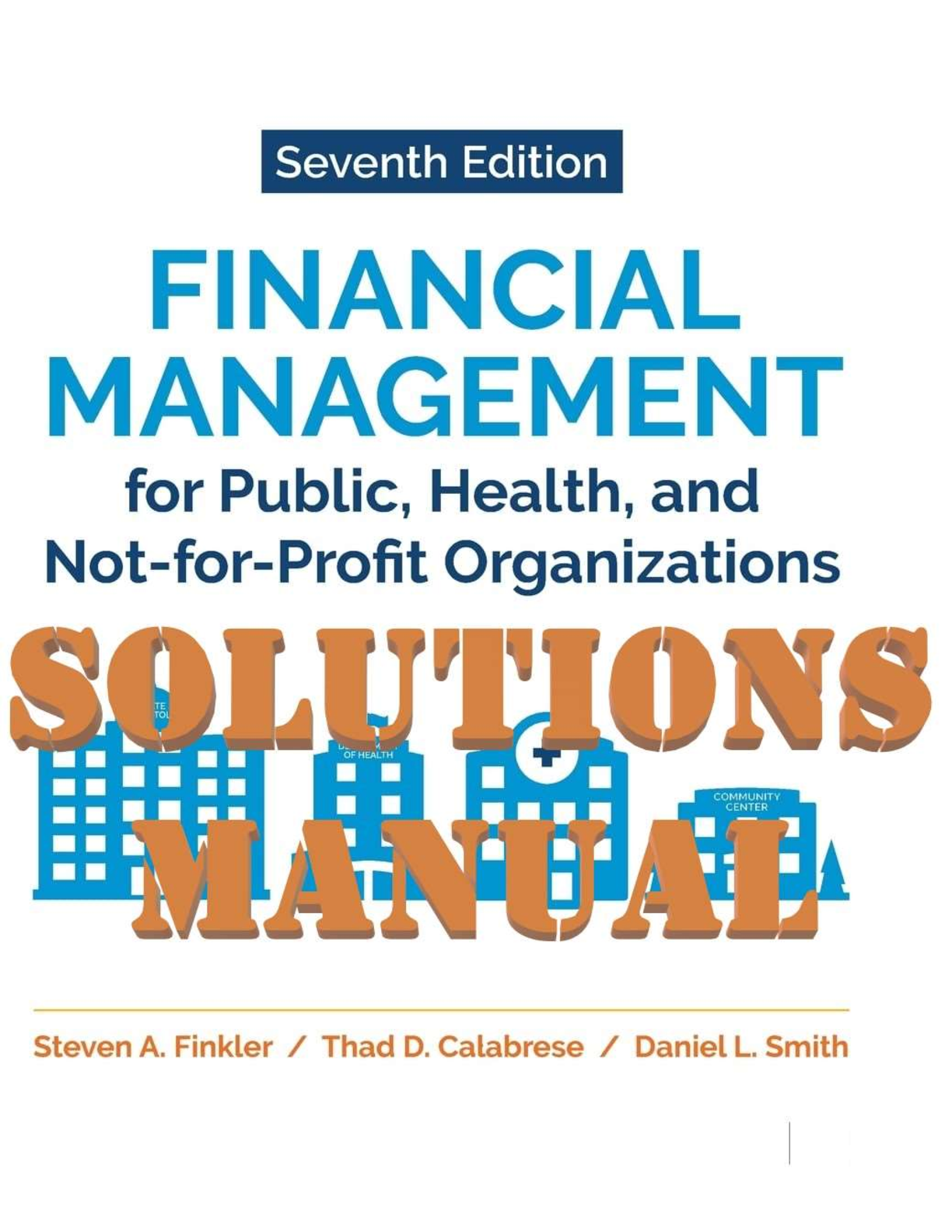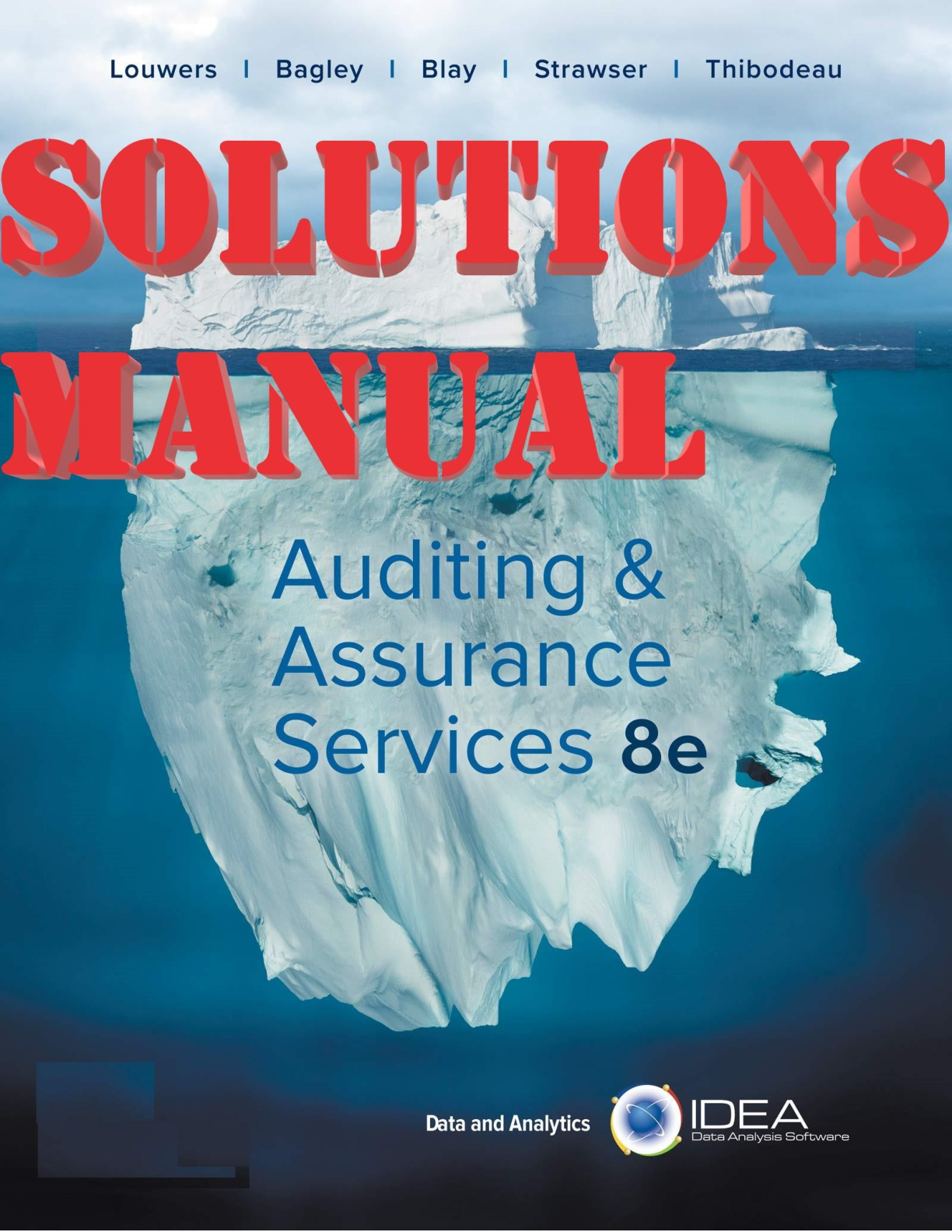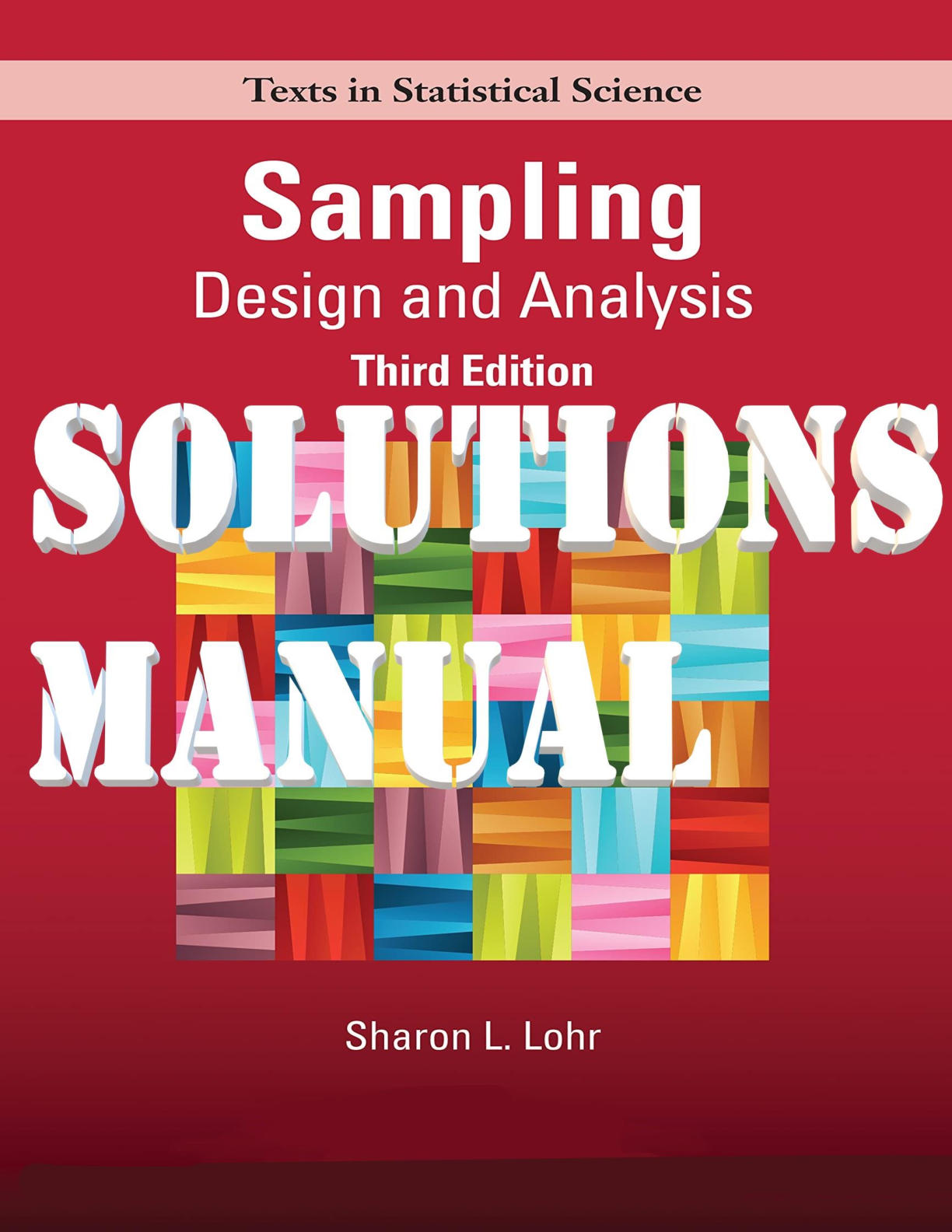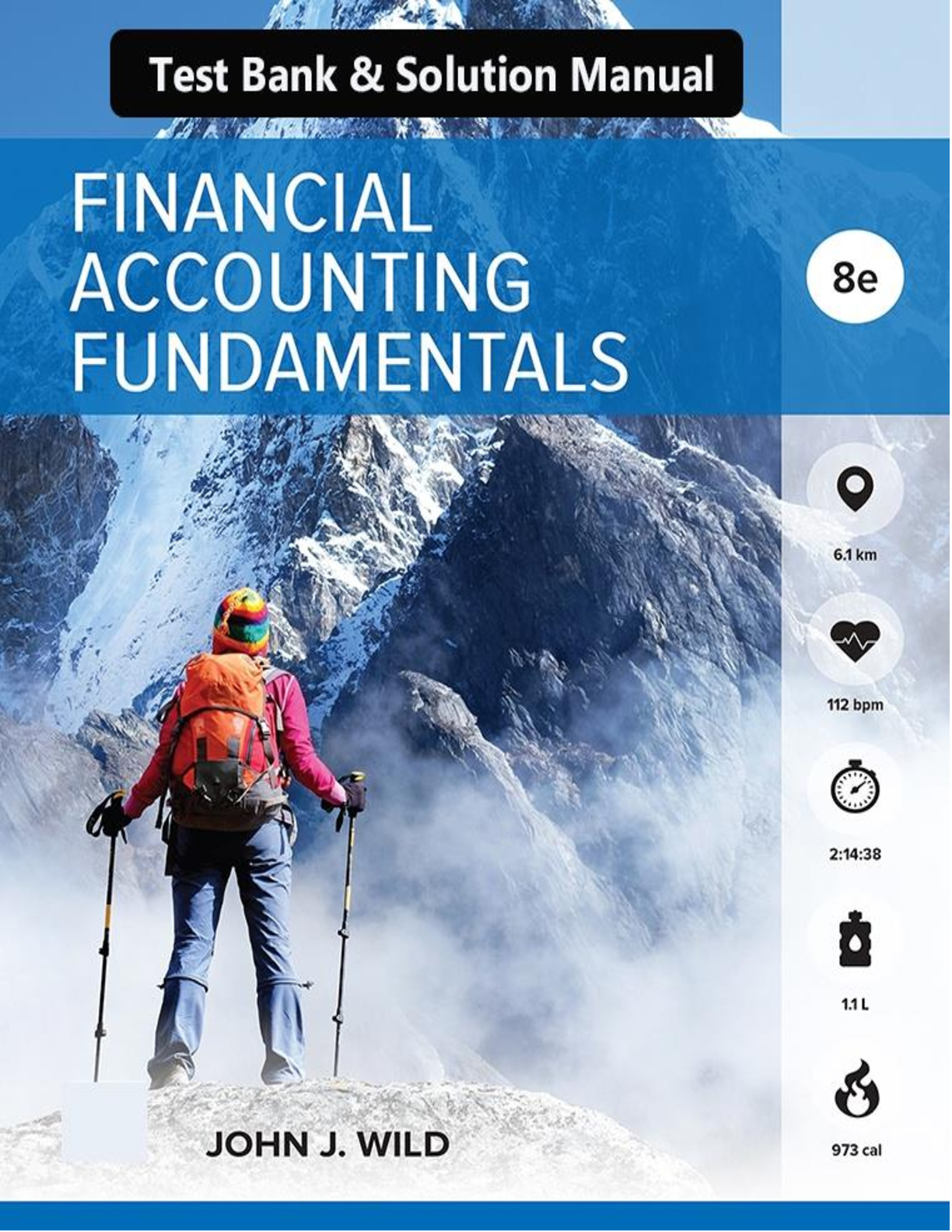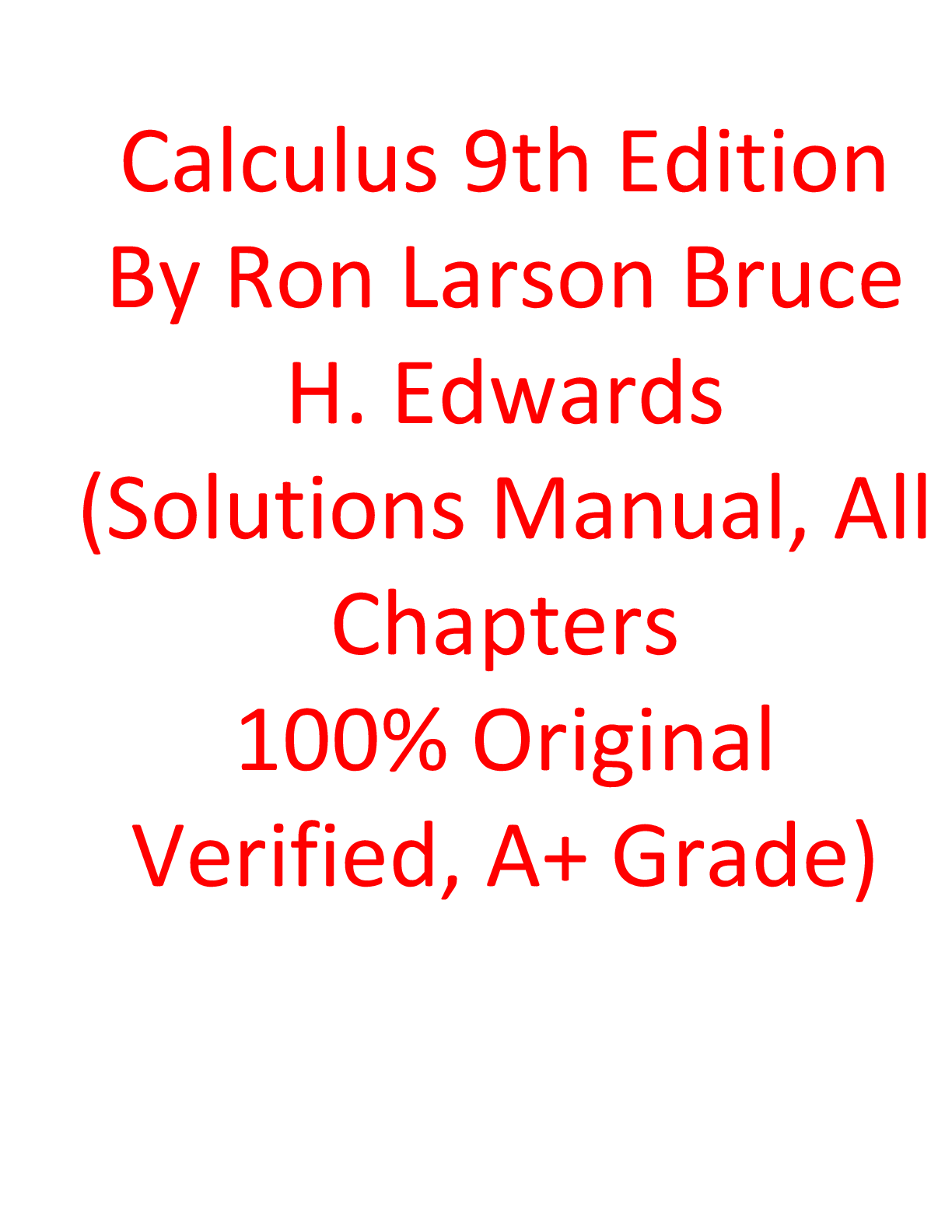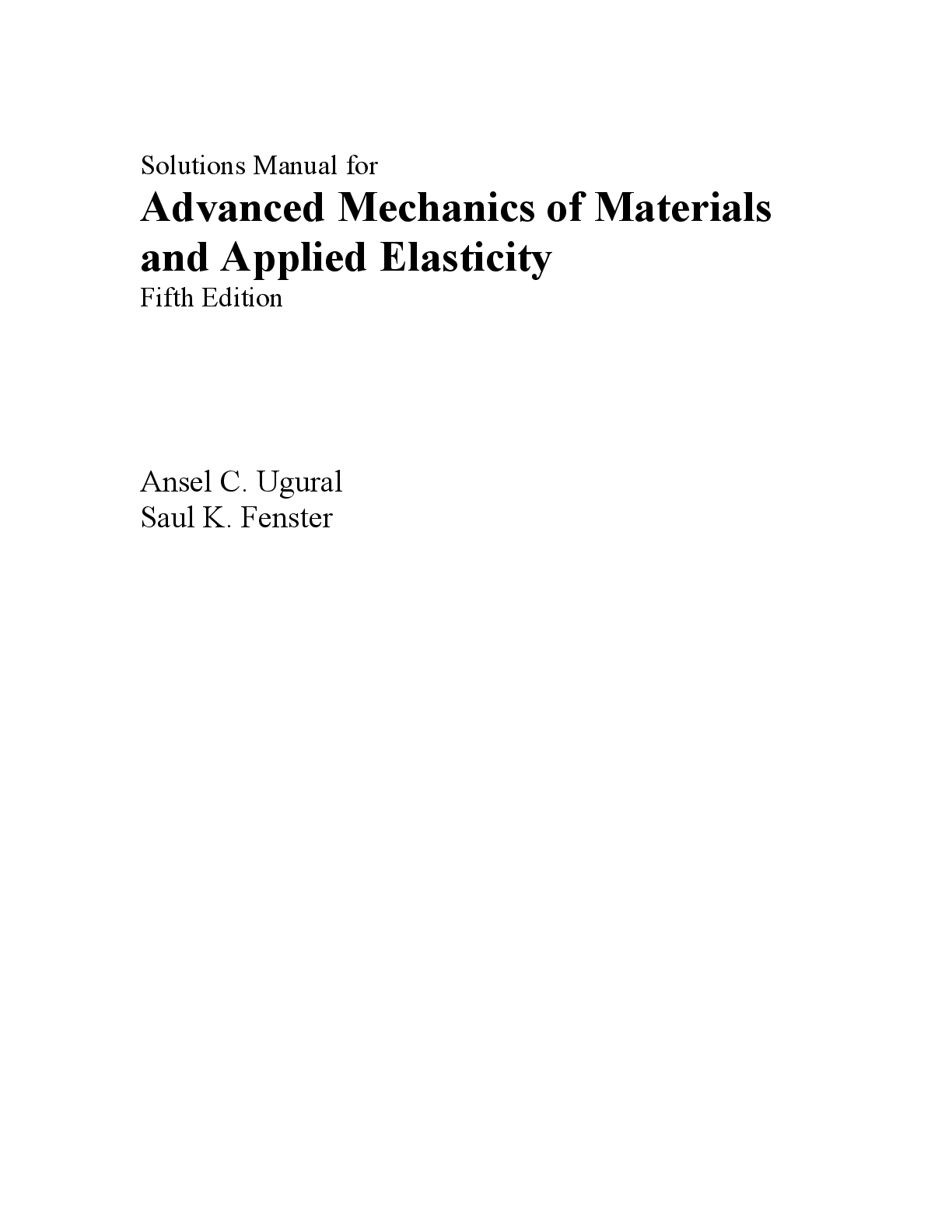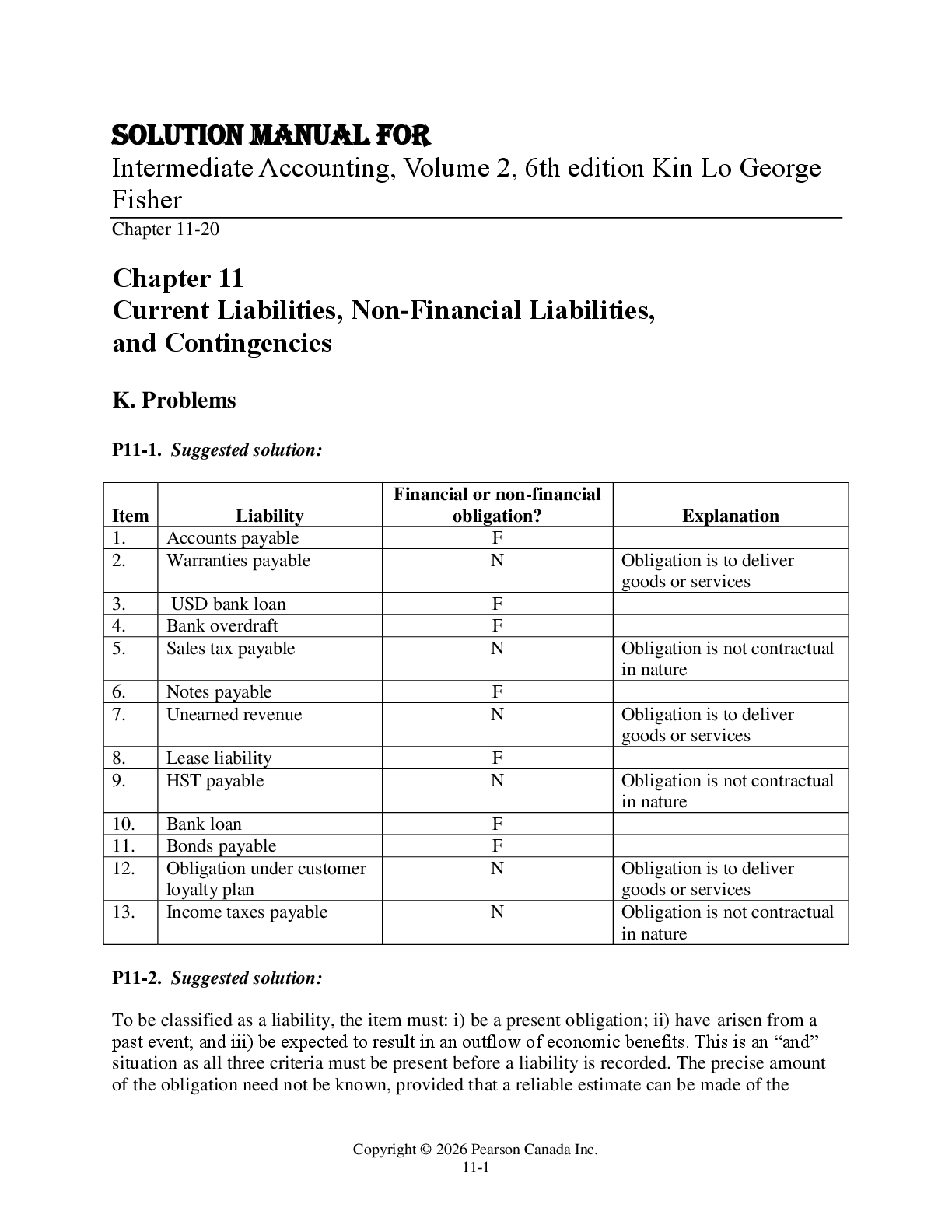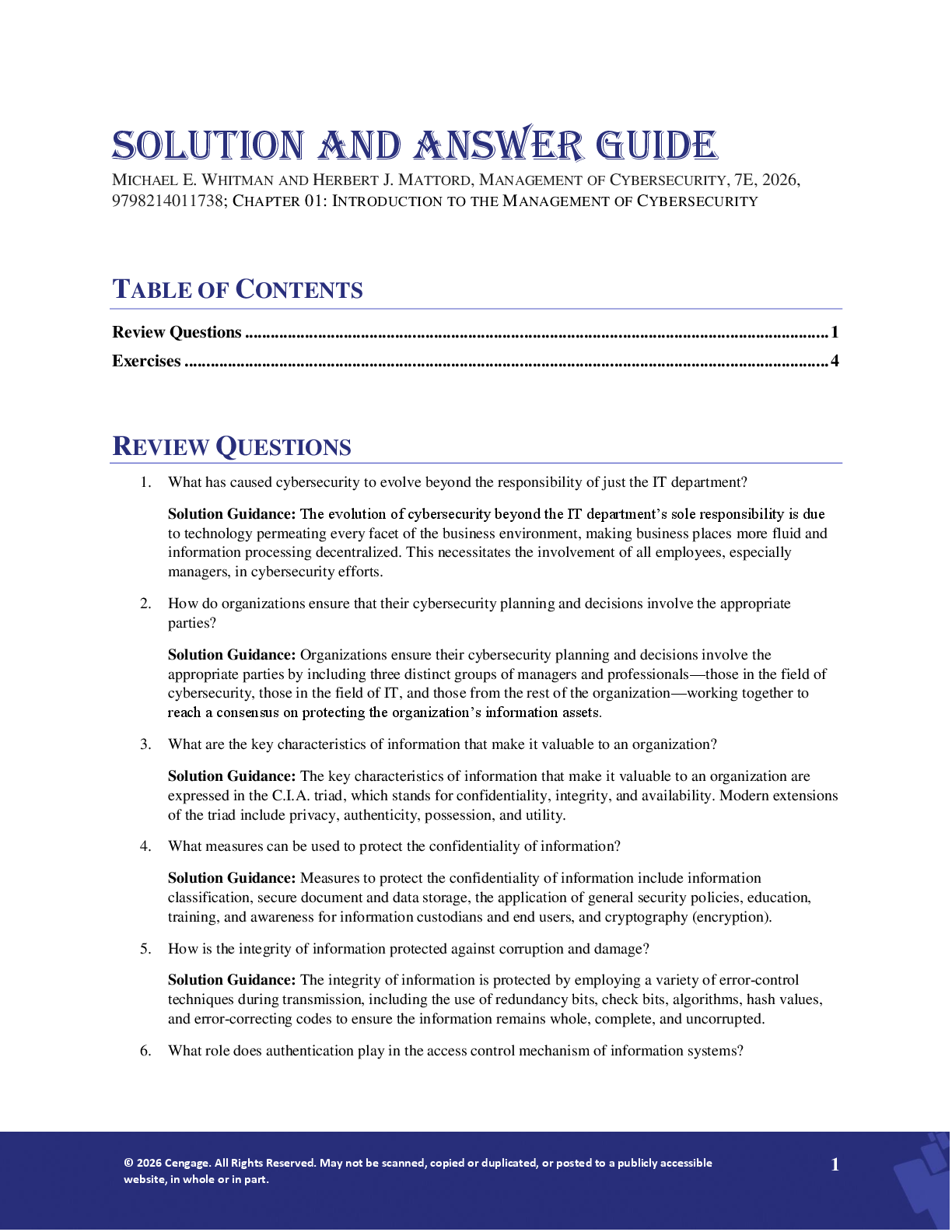Information Technology > SOLUTIONS MANUAL > Systems Analysis and Design, Tenth Edition End of Chapter Solutions: Chapter 4 Requirements Modellin (All)
Systems Analysis and Design, Tenth Edition End of Chapter Solutions: Chapter 4 Requirements Modelling.
Document Content and Description Below
IT 510 Systems Analysis and Design, Tenth Edition End of Chapter Solutions: Chapter 4 Requirements Modelling. Chapter Exercises s Questions 1. What five questions typically are used in fact-f ... inding? What other question does the Zachman Framework include? Is the additional question important? During requirements modeling, the analyst performs fact-finding and asks the questions who, what, when, where, and how. As shown in the table on page 151, the additional question, which is very important, is “why?” (Page 151) 2. What is a systems requirement, and how are systems requirements classified? A system requirement is a feature that must be included in order for the system to be acceptable to users. The five categories into which system requirements are classified are outputs, inputs, processes, performance, and controls. (Page 147) 3. What are JAD and RAD, and how do they differ from traditional fact-finding methods? What are the main advantages of team-based methods? JAD (joint application development) refers to a team of users, managers, and IT professionals that work together to analyze the existing system, work on potential solutions, and develop the requirements for new systems. JAD can be more expensive than traditional methods, and if the team is too large for the project, then the JAD process can be cumbersome. The wide range of inputs and interaction among the participants in JAD can result in a more accurate assessment of system requirements, better understanding of goals, and stronger commitment to the success of the new system. Like JAD, RAD (Rapid application development) uses a group approach, but goes much further. While JAD focuses on the requirements modeling process, RAD is a complete methodology, with a four-phase life cycle that parallels the traditional SDLC phases. The end product of RAD is the new information system. Companies use RAD to reduce cost and system development time, as well as increase the probability of success. RAD relies heavily on prototyping and user involvement. Users can examine a working model as early as possible, determine if it meets their needs, and suggest necessary changes by using the RAD process. Based on user input, the prototype is modified, and the interactive process continues until the system completely is developed and users are satisfied. The RAD model consists of four phases: requirements planning, user design, construction, and cutover. (Page 137) Systems Analysis and Design, Tenth Edition Page 2 of 25 4. What is total cost of ownership (TCO)? What costs often are underestimated? In addition to direct costs, systems developers must identify and document indirect expenses that contribute to the total cost of ownership (TCO). That especially is important where the development team is assessing several alternatives. After considering the indirect (and sometimes hidden) costs, a system that seems inexpensive initially might turn out to be the most costly choice. (Page 149) 5. Provide three examples each of closed-ended, open-ended, and range-of-response questions. Students can really use their imagination in answering this question. Open-ended questions encourage spontaneous and unstructured responses. For example, “Describe the network, and why you designed it that way.” Closed-ended questions limit or restrict the response to elicit specific information or verify facts. For example, “Did you personally check the results?” Range-of-response questions limit answers to a specific set of responses or a numeric scale. For example, “On a scale of one to ten, how strongly do you feel about this plan?” (Page 154) 6. What are three types of sampling? Which one would you use to analyze data input errors? The three types of sampling are systematic, stratified, and random sampling. A systematic sample, such as every tenth person, would be used to provide even coverage of an overall group. Stratified sampling can be used to obtain a representative sample from separate categories within the overall group. Random sampling will provide a list of any 50 customers. Consider the following example: A business might have three categories of customers. If it needs a sample from each customer category, it can use stratified sampling of ten customers from each category. For an evenly distributed sample from the total customer group, systematic sampling gives a representing sample. If no significant differences exist among the customer categories, random sampling might be acceptable. (Page 162) 7. What is the Hawthorne Effect? Have you ever experienced it? When and where? The Hawthorne Effect refers to the idea that people perform differently when they realize they are being observed. When a systems analyst tries to observe procedures as they actually occur, the Hawthorne Effect suggests that the presence of the analyst will influence the performance, and what the analyst sees is not necessarily what occurs in actual practice. It might be helpful to meet with workers and their supervisors before conducting an observation to explain the process and make them more comfortable. (Page 159) 8. What is a functional decomposition diagram (FDD) and why would you use one? Explain how to create an FDD. A functional decomposition diagram (FDD) is a top-down representation of a function or process. Using an FDD, an analyst can show business functions and break them down into lower-level functions and processes. Creating an FDD is similar to drawing an organization chart — you start at the top and work your way down. Figure 4-8 shows an FDD of a library system drawn with the Visible Analyst CASE tool. FDDs can be used at several stages of systems development. During requirements modeling, analysts use FDDs to model business functions and show how they Systems Analysis and Design, Tenth Edition Page 3 of 25 are organized into lower-level processes. Those processes translate into program modules during application development. (Page 144) 9. What are agile methods? Are they better than traditional methods? Why or why not? Agile methods, which are discussed in detail in Chapter 1, have attracted a wide following and an entire community of users. Agile methods typically use a spiral model, which represents a series of iterations, or revisions, which are based on user feedback. Proponents of the spiral model believe that this approach reduces risks and speeds up software development. Analysts should recognize that agile methods have advantages and disadvantages. By their nature, agile methods allow developers to be much more flexible and responsive, but can be riskier than more traditional methods. For example, without a detailed set of system requirements, certain features requested by some users might not be consistent with the company’s larger game plan. Other potential disadvantages of adaptive methods can include weak documentation, blurred lines of accountability, and too little emphasis on the larger business picture. Also, unless properly implemented, a long series of iterations might actually add to project cost and development time. (Page 137) 10. To what three different audiences might you have to give a presentation? How would the presentation differ for each? Which one would be the most challenging for you? [Note: To help students answer this question, you can suggest that they review the Presentations section in Part A of the Systems Analyst’s Toolkit that follows Chapter 12.] In addition to a presentation given to middle management, you might give a second presentation to upper-level management and a third presentation to the information systems staff. A presentation to upper-level management usually is less detailed, presenting more of an overview. A presentation to IT personnel usually is more technical. When the audience consists of several different types and levels of people, the presentation should be aimed at those listeners who will be making a decision based on the information in the presentation. (Page 165 and Part A of the Systems Analyst’s Toolkit, which follows Chapter 12) Discussion Topics 1. A group meeting sometimes is suggested as a useful compromise between interviews and questionnaires. In a group meeting, a systems analyst meets with a number of users at one time. Discuss the advantages and disadvantages of group meetings. Some possible advantages are: • A group meeting requires less time than individual interviews with all the participants. With the same amount of the analyst’s time, more end users can contribute their knowledge and opinions. • The systems analyst can respond to what is said and address follow-up questions to more than one user. • The comments of one participant can trigger thoughts and discussion from others in the group. • The analyst can observe interaction among the participants. This can reveal information about the way the organization functions. Some possible disadvantages are: • A group meeting is less personal than an interview. Some participants might be less candid in a group meeting than they would be in a one-to-one interview. Systems Analysis and Design, Tenth Edition Page 4 of 25 • It can be difficult to find a time when all the desired participants can attend a group meeting. • Because each person must be given sufficient time to participate, a group meeting can become lengthy and repetitive. • One participant might dominate the discussion, taking up the time of all the other participants. • A questionnaire can reach many more people than could attend a group meeting. 2. JAD requires strong interpersonal and communication skills on the part of the systems analyst. Are those skills different from the ones that an analyst needs when conducting oneto-one interviews? Explain your answer. A systems analyst working with JAD or RAD requires the same skills needed when working one-to-one; however, the analyst also must be able to work as a member of a team. The systems analyst also will have to meet deadlines, which he or she did not create and might be dependent on other members of the team. A JAD or RAD team will have a project leader and this person must have the skills to direct a group, resolve conflicts, and focus the team on the task at hand. 3. Research the Internet, magazines, or textbooks to find examples of visual aids including a bar chart, pie chart, line chart, table, diagram, and bulleted list. How effective was each example? Find at least one example that you could improve. Explain your choice. Answers will vary. The objective is to generate examples of visual aids, and discuss what makes some more powerful and effective than others. 4. Review Part A of the Systems Analyst’s Toolkit, and then attend a speech or presentation and analyze its effectiveness. Consider the speaker’s delivery and how he or she organized the material, used visual aids, and handled audience questions. Was the speech or presentation effective? How could it have been improved? Answers will vary. The objective is to examine actual presentation techniques and generate suggestions for improvement. Projects 1. Design a questionnaire to learn what students think of the registration process at your school. Apply the guidelines you learned in this chapter. Using the sample on page 166 as a model, students should be able to design a simple questionnaire. This would be a good team exercise, with teams acting as the responders to each other’s questionnaire, then offering feedback and suggestions for improvement. 2. Use Microsoft Word to design a simple fill-in form with at least five fields. Many students are unfamiliar with the fill-in form capability of Microsoft Word. You could demonstrate an example if lab facilities are available. Samples of fill-in forms are provided on the Teaching Tools CD. Also, direct students to page 167, where they can see a screen shot that shows Microsoft Word Help on forms that users complete. 3. Create a functional decomposition diagram similar to the one in Figure 4-8 on page 144, but showing your school instead of the library example. Answers will vary. Many students will identify main functions such as receiving mail, sorting mail, delivering mail, and operating the counter. Each main function might have Systems Analysis and Design, Tenth Edition Page 5 of 25 several sub-functions and processes, and so on down the line. The main idea is to encourage students to identify the components and show them graphically in the FDD. 4. Use the Internet to find a site that contains current IT industry news, information, and links. Write a brief description of you liked and didn’t like. This task also is not difficult. You can point out to students that the resource library at the resource library at the SCR site lists a number of publications, and challenge them to find one that is not listed [Show More]
Last updated: 2 years ago
Preview 1 out of 25 pages
.png)
Buy this document to get the full access instantly
Instant Download Access after purchase
Buy NowInstant download
We Accept:

Also available in bundle (1)
Click Below to Access Bundle(s)

IT 510 Systems Analysis and Design, Tenth Edition End of Chapter Solutions CHAPTERS 1-12 + PARTS A, B, C & D Questions and Solutions.
IT 510 Advance IT - Systems Analysis and Design, Tenth Edition End of Chapter Solutions Systems Analysis and Design, Tenth Edition End of Chapter Solutions: Chapter 4 Requirements Modelling. Sys...
By QuizMaster 3 years ago
$44.5
14
Reviews( 0 )
$9.00
Can't find what you want? Try our AI powered Search
Document information
Connected school, study & course
About the document
Uploaded On
Aug 22, 2022
Number of pages
25
Written in
All
Additional information
This document has been written for:
Uploaded
Aug 22, 2022
Downloads
0
Views
136


